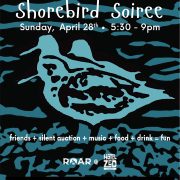The European Green Crab
January 1, 2009 | Josie Osborne
What’s lean, mean, and green (or yellow, brown, grey, yellow or orange)? One of the world’s worst marine invaders: the European Green Crab. Native to Europe but present in Clayoquot Sound since 2000, Green Crabs are fairly easily distinguished from our common native crab species. Mature individuals can reach about 90 mm across its carapace (the large “back” shell), meaning a fully grown Green Crab never gets as large as a mature Dungeness or Red Rock Crab, but they are much larger than a Purple Shore Crab or a Green Shore Crab (usually 20 mm or less). Its common name, the Green Crab, is somewhat misleading – the shell can actually be yellow, green, orange or red depending on the crab’s age. But the most useful distinguishing feature is the ten teeth along the front rim of the carapace, five behind each eye.
As with many other living organisms, the scientific name of the European Green Crab, Carcinus maenas, is derived from the Greek language. In Ancient Greek mythology, Carcinus (pronounced car-SYE-nus) was the crab that came to the rescue of the multi-headed serpent Hydra as she battled Heracles (a.k.a. Hercules). Carcinus bit Heracles in the foot so Heracles crushed him under his heel, For his efforts, the goddess Hera placed Carcinus in the heavens as the star constellation Cancer. Maenas (pronounced MEAN-us) comes from the Maenads, who were the wild, raving female worshippers of the god Dionysus (god of mystery, wine and intoxication).
Somehow, it seems fitting that the European Green Crab is named after a tenacious heel-biting crab and a bunch of ecstatic women who tended toward violent orgiastic outbursts. The Green Crab has been named one of the “Top 100” worst alien invaders in the world. Native to Europe and the North Sea, the Green Crab has been hitch-hiking around the globe since the early 1800s via ships’ ballast, aquaculture operations, transplanted aquatic vegetation, and ocean currents. It is now established on the western and eastern coasts of North America, in South Africa, Argentina and Australia. The first sightings on the west coast of Vancouver Island were in Useless Inlet (Barkley Sound) and Lemmens Inlet (Clayoquot Sound) in 1999 and 2000 respectively. Since then, the Green Crab has established populations throughout the west coast of Vancouver Island, particularly in Pipestem Inlet (near Toquart Bay in Barkley Sound) and Winter Harbour (north of the Brooks Peninsula). These locales may be ‘Ground Zero’ for the Green Crab, providing just the right conditions to allow it to proliferate and spread hundreds of thousands of lean, green, mean crab larvae.
The Green Crab is fast, aggressive and voracious (sounds like a Greek Maenid!). Dubbed the ‘cockroach of the sea,’ a single crab can eat 40 half inch (13 mm) clams in a day – digging 6 inches (15 cm) into the beach substrate to get at them. It can crack oysters up to 2.5 inches (60 mm) in size, threatening wild and cultured oyster populations. Laboratory studies show that it will also prey on Dungeness and Red Rock Crabs – so long as its victim is the same size or less. Along with its large appetite, the Green Crab sports several features that make it the ‘perfect’ invasive species: it can live in all types of protected and semi-protected marine and estuarine habitats (it can even survive in fresh water); it can survive out of the water for up to a week; and unlike our native crab species, it can rotate its claws over its back so it can defend itself from behind as well as from the front. But there’s not much to defend itself from. In its native habitat the Green Crab has many predators, but here in North America nothing much seems to eat it.
So far, the Green Crab has not had a measurable effect on wild shellfish fisheries or aquaculture operations in Washington or British Columbia. However, on some California beaches, clam harvests have dropped 40% due to the Green Crab. Continued monitoring is important, so if you think you have seen or caught a Green Crab, photograph it if possible, note the location and date and contact us at the Raincoast Education Society – we’ll get your information to the right people at the Department of Fisheries and Oceans. If you are sure it is a Green Crab, place it in a plastic bag and freeze it (put a tag in the bag with the location, date etc). If you’re not sure, let it go. (Remember, to keep Dungeness and Red Rock Crabs, you must possess a valid recreational fishing license and adhere to all size and sex regulations.)



